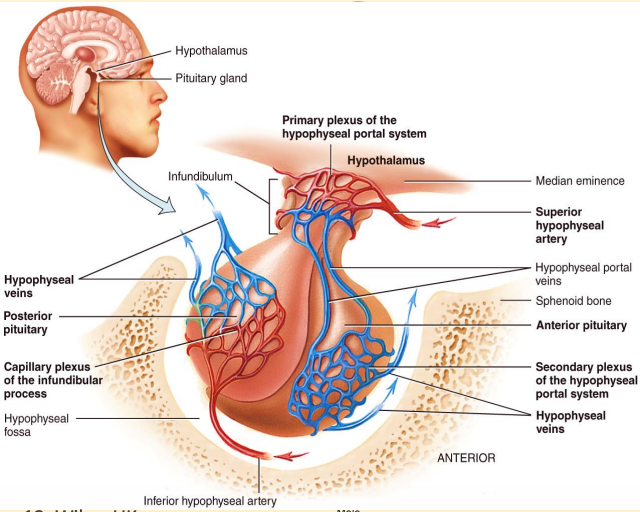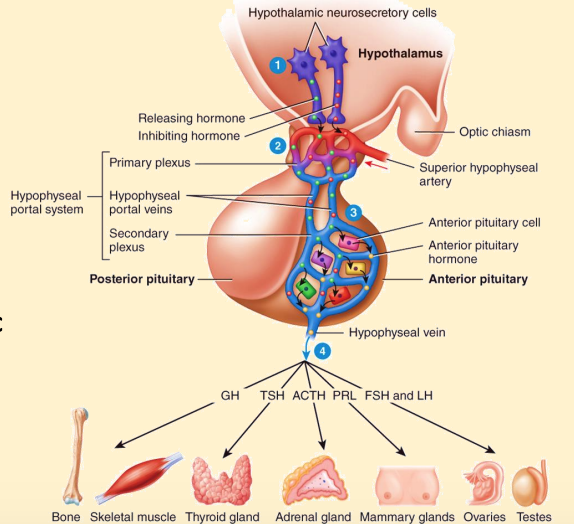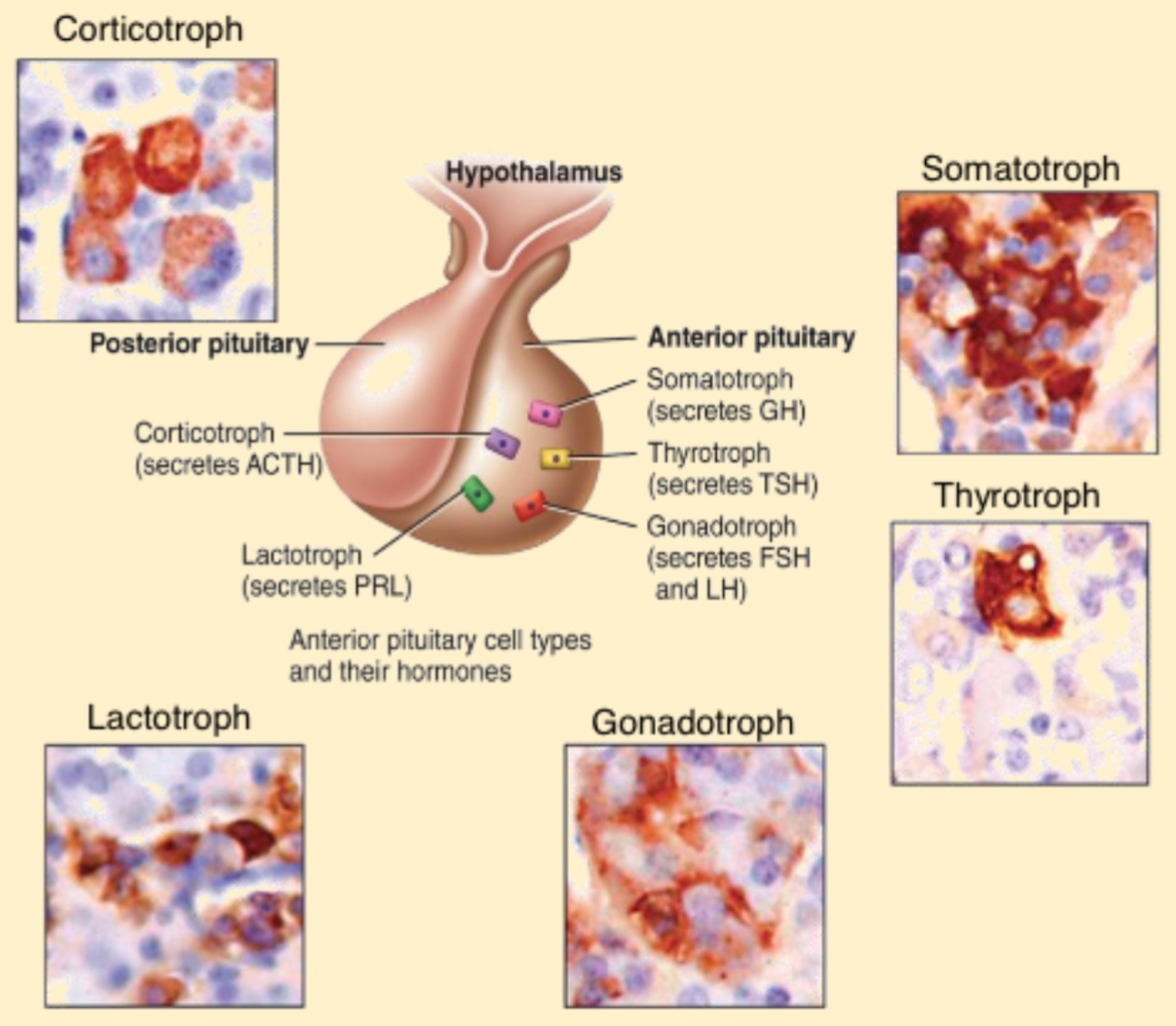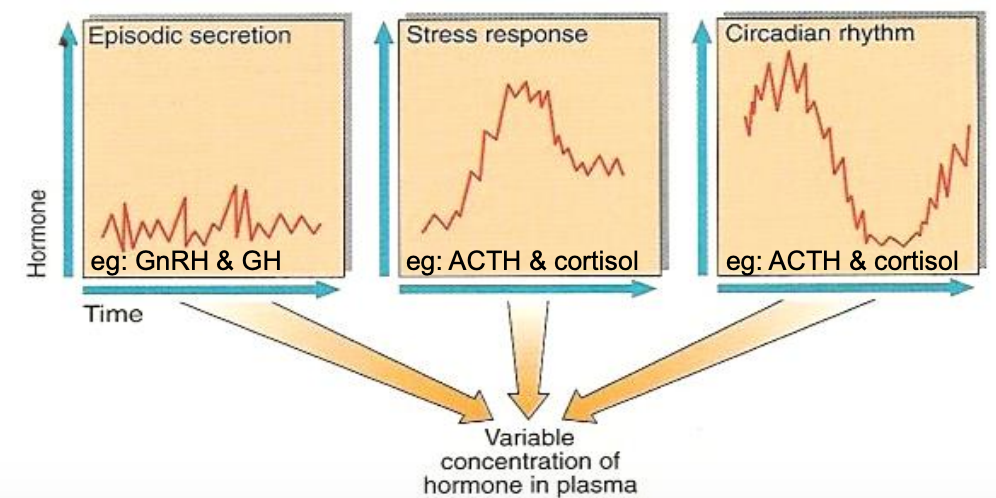W1 L1: Intro to Endocrinology
- hormone regulating process
Physiological Importance:
Controls many aspects of physiology, via secretion of hormones
Endocrine and neuronal (nervous) systems are considered the 2 major control systems
- although there is substantial interaction between them (emergence of ‘neuroendocrinology’ as a discipline).
Endocrine systems also interact with; cardiovascular, digestive and immune system
Endocrine disruptors - natural or man-made chemicals that may mimic or interfere with the body's hormones
- e.g. feminisation of fish near business-dense areas due to incr. micro plastic in the water
What is a hormone?
- chemical messenger secreted into blood to act on distant targets
- present at v. low conc in the body, as highly specific mechanisms of action in target tissues
- grouped by biochem & physiological function
- dynamics of secretion and action vary greatly, depending on the hormone and physiological role
How does a hormone reach its target (signalling)?
- A substance produced by 1 tissue in the body that travels in the bloodstream to act on another tissue.
- Autocrine - cell releases substance and has receptors itself to respond to the signal
- Endocrine - cell releases hormone which then travels in blood stream to distant targets (could be cm’s to long distance)
- Paracrine - releases hormone and neighbouring cell responds due to receptor on cell surface
- Neuroendocrine - neurotransmitter released from synapse
Biochem of hormones
- more accurate way of categorising hormones compared to physiology
- 3 main gps
- AA derivatives
- tryptophan (melatonin)
- tyrosine (others, e.g. adrenaline)
- water soluble
- peptides
- TRH (3AA)
- Growth hormone (200AA)
- water soluble
- Steroids - used to generate cortisol and vit D3
- lipid soluble
Anatomy of endocrine system
- endocrine glands/organs
- ductless glands that secrete hormones into the blood
- (NB exocrine gland: secretes onto an epithelial surface, such as of the gut lumen, usually via a duct)
- Pancreas acts as both an endocrine and an exocrine organ
- located throughout the body
- often contain multiple cell types, which have different function (e.g. the pituitary gland) - referred to as heterogeneous
Control of hormone secretion
- Stimulus changes composition of blood
- Blood components
- Nutrients
- Ions
- Endocrine organs & glands – there are quite a few
- pineal gland - secretes melatonin → important for bio rhythms
- pituitary gland
- hypothalamus - portal blood supply important in supplying to the anterior part
- adipose tissue (fat) & GI tract - secrete hormones involved in E balance & metabolism
- placenta - secrete hormones involved in foetal and maternal development

- Hormones released from a gland are transported in blood to target cell
- Receptors on target cells effect changes
- Receptors on cell sense changes and initiate further changes
- Tropic hormones control the activity of a target endocrine cell. E.g. Adrenocorticotropic hormone (ACTH)

- Metabolic/other effect observed
‘Heterogeneity’ of Endocrine Organs
Heterogeneity: amount of variation within a subject
- cf homogeneity: uniformity of a subject
- Different cell types are subject to different control mechanisms (inputs) and secrete different hormones

Feedback networks
- Maintain homeostasis
- Most pathways consist of these components: sensor, comparator, transducer and receptor
- Feedback is where systems limit one another's activity around a pre-set oscillator (physiological range).
- Communication between the receptor, control centre and effector is essential for normal operation of the system.
Hormonal feedback
System 1 responds to stimulus by increasing hormone 1 output, which then stimulates system 2 to increase hormone 2 output.
E.g. Oestrogen from the ovary increases Luteinising hormone (LH) production from the anterior pituitary gland which results in ovulation

If hormones cause changes in physiology, how do they do this?
- They bind to receptors on target cells
- Receptors may be located at diff. conc in diff. parts of the body
- receptor conc dictate the strength of reaction to the hormone:
- high receptor conc → big reaction
- low receptor conc → small reaction
Effects of hormone-receptor binding
- Change in transporter activity
- Activation of secondary messengers (signalling cascade) e.g. Ca2+ release or cAMP
- Effects are long acting (hours, days) because hormones influence protein synthesis (through gene expression)
Patterns of hormone secretion

Episodic secretion → up & down around a normal point
stress response → due physical or mental stress
Circadian rhythm → follows a pattern (night & day)
QUIZ
- Are hormones found at
(a) high
or
%%(b) low concentration in the blood?%% - %%True%% or false?
Some hormones may require days to exert their physiological effects. - What best describes a paracrine signal?
(a) It is secreted by a nerve cell
%%(b) It acts on an adjacent cell%%
(c) It’s a steroid - True or %%false%%?
All endocrine organs are made up of a single cell type.